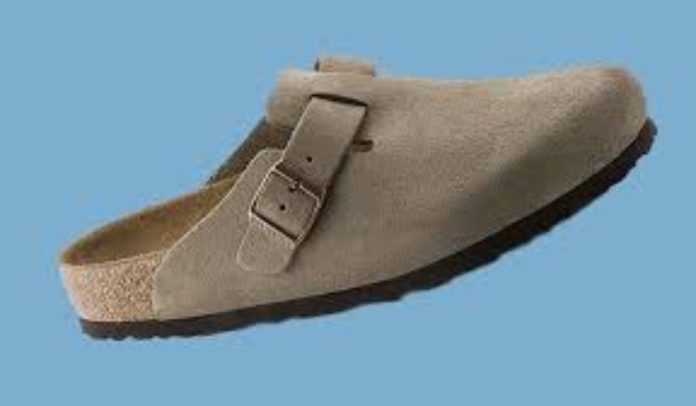In a world of ever-changing fashion trends, few footwear styles have endured as long or remained as distinctly iconic as the Boston clog. With roots dating back to the 17th century, these sturdy, slip-on shoes have gone from strictly utilitarian footwear to a beloved fashion staple embraced by trendsetters, professionals, and casual wearers alike.
Originally designed for practicality in factories, kitchens, and farms, the humble Boston clog has carved out a unique place in fashion history. Its chunky wooden base and supple leather upper exude an effortlessly cool, bridging the gap between form and function in a way few other shoes can match. As the clog’s popularity has ebbed and flowed over the decades, its unmistakable silhouette has remained instantly recognizable worldwide.
Historical Origins: From Factories to Fashion
The predecessors of the modern Boston clog can be traced back to 17th-century Europe when rudimentary wooden overshoes were worn as protective footwear by workers in unavoidably wet or muddy conditions. By the late 1700s, clog makers in Sweden, France, England, and elsewhere had elevated the humble wooden shoe into a sturdier, more ergonomically shaped design.
However, it wasn’t until waves of European immigrants brought their traditional clog styles to manufacturing hubs like Boston in the 19th century that the iconic American clog truly took shape. The ankle-covering leather uppers and slip-resistant wooden soles made the “Boston Batters” ideal for factory workers who spent long hours on their feet. Affordable, durable, and easy to kick off, the clog’s simple practicality made it a ubiquitous sight in industrial cities.
As the blue-collar workforce embraced the clog for its unparalleled combination of comfort and protection, the Boston style developed its own distinct flair. The wood was hand-carved into a thicker, squatter shape with Low, broad heels to provide enhanced arch support and slip resistance. The uppers transitioned to smooth, supple leathers in shades like oxblood, mustard yellow, and saddle tan to give the rugged workhorse a touch of New England style.
From the Factory Floor to Counterculture
While the Boston clog remained squarely rooted in its workwear origins through the first half of the 20th century, the 1960s and ’70s saw the shoe undergo an unlikely metamorphosis into a hip, counterculture fashion statement. As young people gravitated toward more casual, utilitarian styles that projected an anti-establishment ethos, the clog’s humble, unpretentious profile resonated.
Boutiques in trendy enclaves like Greenwich Village and Haight-Ashbury began selling avant-garde renditions, with artisan makers hand-painting and customizing the wooden bases. Musicians and artists fully embraced the clog’s working-class flair, cementing its status as the bohemian shoe of choice. Famously captured by photographers in her Boston clogs, Yoko Ono did more than perhaps anyone to elevate the shoe to high fashion.
“I think the clog became part of a broader fashion revolution that liberated people from conformist dress codes and allowed more individuality and authenticity in style,” says Susan Fleishman, professor of fashion history at the Massachusetts College of Art and Design. “The clog’s unpretentious, utilitarian vibe spoke to youth who embraced its rejection of formality and conspicuous consumption. Its popularity was definitely a counter-cultural stance.”
Boston Clogs Hit the Mainstream
Just as young people drove the Boston clog’s transition from humble work boots to hip, trendsetting footwear, its widespread mainstream popularity in the 1970s had plenty to do with changing social dynamics and cultural forces. As the feminist movement gained momentum, women entered traditionally male fields like medicine, law, and academia in droves. Seeking professional footwear that was comfortable yet stylish, many embraced clogs for their blend of support and flair.
“My Boston clogs were incredibly comfortable and practical to wear for long rounds at the hospital or clinic, but they also projected this irreverent, earthy image that felt authentic to who I was,” recalls Dr. Sara Morganstein, an OB/GYN who got her first pair of clogs fresh out of medical school in 1976. “There was something subtly defiant about a woman doctor wearing these funky wooden shoes. It said ‘I don’t need to dress like a man to be taken seriously.'”
The growing ranks of fashionable young urban professionals – forever dubbed “yuppies” – were a key driver in clogs becoming hugely popular in American cities from Boston to Chicago to San Francisco in the late ’70s and early ’80s. Retailers responded accordingly, with dozens of companies springing up to manufacture clogs in updated materials like brightly-dyed leathers and embossed patterns. As celebrities started rocking their own signature clog styles, the humble shoe became an unlikely status symbol.
While their mainstream popularity eventually waned, the Boston clog has maintained a devoted core of passionate wearers and brands catering to them. From classic old-world European makers to modern American companies embracing the New England heritage aesthetic, a healthy bootmaking tradition has ensured the clog remains a footwear mainstay.
Boston Clogs Today – Embracing Tradition, Updating Style
Today, clog enthusiasts span all ages and walks of life, unified by an appreciation for the blend of old-world craftsmanship and contemporary versatility that this beloved “ugly shoe” offers. Walk through practically any hip urban neighborhood, from Back Bay in Boston to Venice Beach in LA, and you’ll spot Boston clogs anchoring countless stylish looks.
“When I think of classic New England style footwear, nothing speaks to our roots of hardworking craftsmanship and effortless-yet-fashionable aesthetic more than the Boston clog,” says Kyle Rancourt, co-founder of Kyle Rancourt Handmade Shoes based outside Portland, Maine. “We’re constantly refreshing our clog designs with modern materials and details, but always with a nod to that iconic workwear heritage.”
Whether rendered in hand-burnished Brazilian leather with Nike Air soles or traditional hand-carved wooden bases, the modern Boston clog has embraced its dual identity as heritage footwear and contemporary fashion statement. From professionals to creatives to stylish urban moms running errands, the shoe’s versatility and comfort keep it front and center.
“The Boston clog has shown such incredible staying power precisely because it has been able to evolve and adapt with the times while still maintaining its unpretentious, back-to-basics spirit,” says Fleishman. “It originated from the quintessentially New England ideals of quality craftsmanship meeting effortless, no-fuss style. That combination has allowed the Boston clog to remain an enduring fashion icon that resonates across generations and subcultures.”
After over 300 years of men, amidst shifting cultures and aesthetics, the humble Boston clog shows no signs of fading away. For a style so rooted in simplicity, it has displayed remarkable staying power – managing to feel perpetually au courant for wave after wave of wearers seeking laidback comfort and subtle flair. From the factory workers who birthed its sturdy utilitarian construction to the fashion-forward urbanites who rock its distinctive silhouette today, the Boston clog remains an enduring icon of American style.

